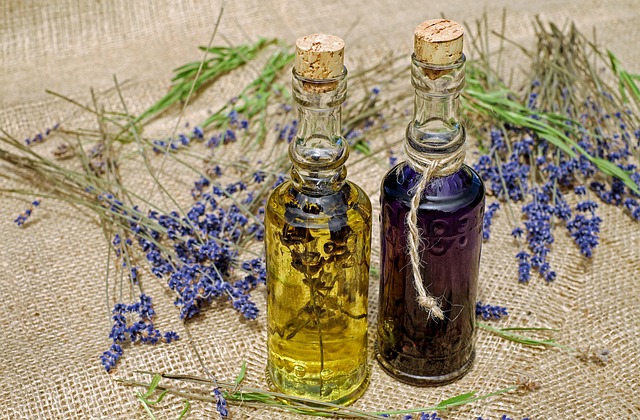Ice baths, with temperatures between 50-59°F (10-15°C), have become a popular tool among athletes for muscle recovery. This technique reduces inflammation and swelling by constricting blood vessels, triggers norepinephrine and endorphin release for better physical preparation, helps eliminate lactic acid, and speeds up muscle repair, reducing post-workout stiffness. Proper ice bath usage involves strategic duration (10-15 minutes) and frequency (3-4 sessions per week), with gradual immersion time increases to minimize discomfort. Personal considerations like tolerance and recovery goals should guide ice bath therapy for optimal muscle recovery after athletic activities.
“Unleash your athletic potential with the power of cold water immersion—a game-changer in post-exercise recovery. This therapeutic technique has gained popularity among folks pushing their physical limits. In this comprehensive guide, we explore the science behind ice baths and their impact on muscle recovery. From understanding inflammation’s role to uncovering the physiological benefits of cold therapy, we navigate the world of cold water immersion. Discover how this simple yet effective method can revolutionize your athletic routine.”
Understanding Muscle Recovery and Inflammation: The Initial Response to Exercise
Muscle recovery is a complex physiological process that involves both short-term and long-term responses to exercise. When you engage in intense physical activity, your muscles undergo stress, leading to micro-tears in muscle fibers. This initial response triggers an inflammatory reaction—a natural defense mechanism aimed at healing and repairing the damaged tissue. Inflammation is characterized by increased blood flow to the affected area, delivering essential nutrients and cells to facilitate recovery. However, prolonged or excessive inflammation can be detrimental, potentially impeding muscle growth and repair.
Ice baths, a popular recovery technique among athletes, are believed to mitigate this inflammatory response. The cold temperature helps constrict blood vessels, reducing blood flow to the muscles. This process can alleviate swelling and minimize damage to surrounding tissues. By decreasing metabolic activity and inflammation, ice baths may speed up the muscle recovery process, allowing athletes to return to training or competition sooner.
How Cold Water Immersion Works: A Deep Dive into the Physiological Effects
Cold water immersion, often in the form of ice baths, has gained popularity among athletes as a recovery method. This technique works by subjecting the body to cold temperatures, typically below 59°F (15°C), for a short period. Upon entry into cold water, the body experiences several physiological changes. One of the primary effects is vasoconstriction, where blood vessels narrow, reducing blood flow to extremities and core muscles. This process helps minimize inflammation and swelling in overused or injured tissues.
Additionally, cold water immersion triggers a release of norepinephrine, a hormone that prepares the body for physical activity by increasing heart rate and blood flow to active muscles. It also stimulates the release of endorphins, natural painkillers, which can reduce perceived soreness and stress. The cold temperature further enhances recovery by reducing metabolic waste products in muscles, such as lactic acid, that build up during intense exercise. This process aids in quicker muscle repair and reduces post-workout muscle stiffness.
Ice Baths for Athletic Recovery: Benefits, Techniques, and Potential Risks
Ice baths have gained popularity as a recovery tool among athletes, offering a unique approach to accelerating muscle recovery after intense workouts or competitions. The science behind this practice lies in the contrast between the cold water temperature and the body’s core temperature, which triggers various physiological responses. When an athlete immerses themselves in ice water, typically at around 50-59°F (10-15°C), it causes vasoconstriction—the narrowing of blood vessels. This process reduces blood flow to the extremities, minimizing further damage to already stressed muscles and tissues. As a result, inflammation is contained, and the healing process begins.
While ice baths for athletic recovery show promising benefits, such as reduced muscle soreness, faster recovery times, and improved performance, it’s essential to employ the technique correctly and be aware of potential risks. Over-immersion can lead to hypothermia, especially in individuals with a lower tolerance to cold or those already fatigued. It’s recommended to limit ice bath sessions to no more than 15 minutes, ensuring proper heating up afterward to gradually return the body’s temperature to normal. Proper technique and individual considerations are key to reaping the benefits of ice baths while minimising associated risks.
Optimizing Cold Water Therapy: Duration, Frequency, and Individual Considerations
Optimizing cold water therapy involves understanding the right duration, frequency, and individual considerations for maximum benefits, especially in accelerating muscle recovery after intense athletic activities. Ice baths, a popular form of this therapy, are most effective when used strategically. Typically, immersing yourself in cold water between 50-59°F (10-15°C) for 10-15 minutes is recommended. This duration allows for sufficient vasoconstriction and blood flow reduction to minimize inflammation while still enabling adequate oxygen delivery to muscles.
Frequency varies based on individual needs, but generally, 3-4 sessions per week are beneficial. It’s crucial to consider personal tolerance and recovery goals. For instance, athletes recovering from strenuous events might require more frequent sessions, while those with mild soreness can start with fewer immersions. Additionally, gradually increasing immersion time can help the body adapt, reducing the risk of shock or discomfort.
The science behind cold water immersion reveals a powerful tool for athletic recovery. Ice baths, by inducing mild hypothermia, stimulate blood flow and promote the release of endorphins and anti-inflammatory cytokines. This natural process helps reduce muscle soreness and accelerates the body’s healing mechanisms. When used optimally—with durations ranging from 10 to 30 minutes, at frequencies of 1-3 times per week, and tailored to individual needs—ice baths can significantly enhance athletic performance and speed up recovery time. However, it’s crucial to balance these benefits against potential risks, such as prolonged exposure leading to hypothermia or shivering, and consult with a healthcare professional before incorporating ice baths into your post-workout routine.
